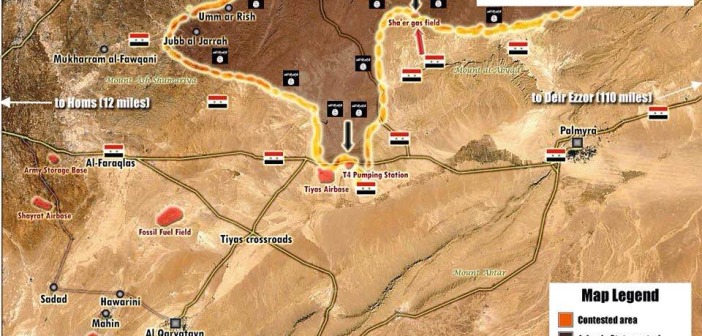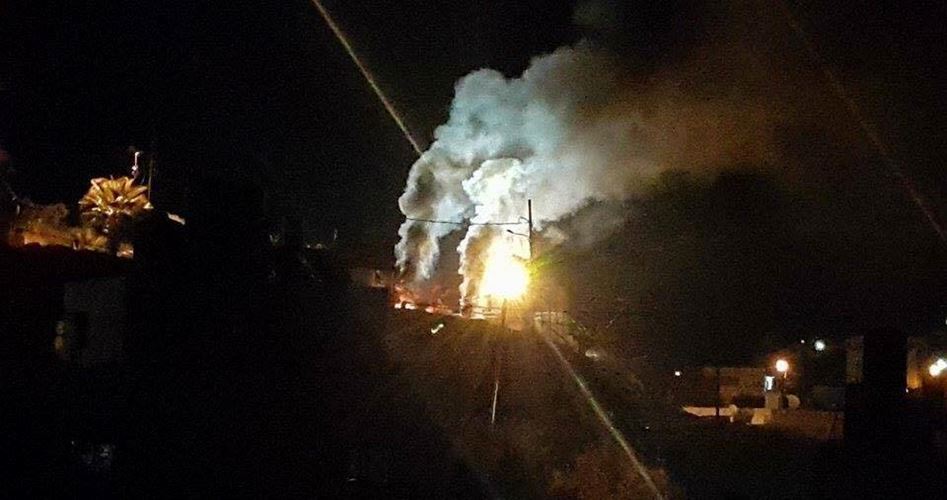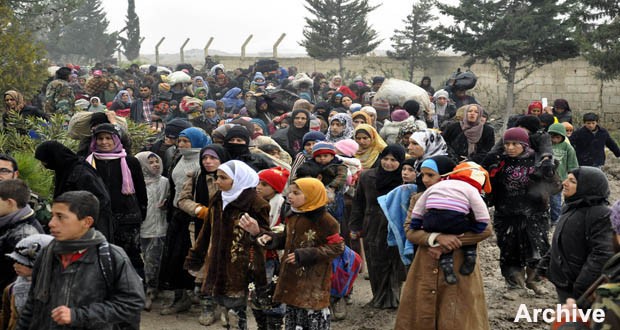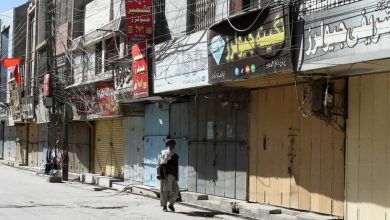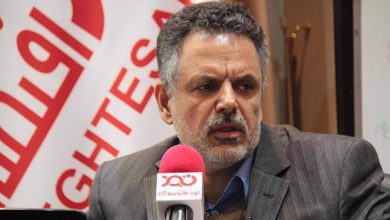Fua’a, Kafraya Refugees Urge Syrian Army to Rescue Family Members


A number of wounded residents of Fua’a and Kafraya who have been transferred to Hasya camp under the agreement between the government and the militants in Aleppo underlined that their psychological wounds would never heal as long as their family members are under the terrorists’ siege.
“Our family members are under everyday attacks by the terrorists’ mortar and missile fire,” the father of a family who has been transferred to Hasya told FNA on Saturday.
“Many families in Fua’a and Kafraya have no shelters in the cold winter under rain and snow,” he added.
The wounded father and other people accompanying him in Hasya camp called on the Syrian army and its allies, specially Iran and other friends of Syria, to help them rescue their family members from the hands of the terrorist groups.
According to an agreement between the Syrian government and the militants, approximately 2,500 civilians of Idlib should have left Fua’a and Kafraya in two 1,250 groups in return for evacuation of trapped militants in Aleppo’s Eastern neighborhoods.
In the next stage, 1,500 injured and patient civilians of Fua’a and Kafraya would leave the towns in return for the evacuation of 1,500 militants in Madaya and Zabadani in Damascus province.
People in Aleppo took to the streets on Friday after the Syrian Army General Command declared restoration of security and stability to Aleppo city and its liberation from terrorists.
The citizens marched through the streets, expressing joy over the victory of the Syrian army and its allies over the terrorists and expelling them from Aleppo.
Aleppo residents carried flags of the homeland and raised pictures of President Bashar al-Assad, while mosques called to prayers and the churches tolled their bells.
On Thursday, the last batch of terrorists and their families left the neighborhoods of Al-Zobaydiyeh, al-Ansari and Salahuddin East of Aleppo.
The Syrian Army and its allies from the resistance front made history and took back the country’s second most important city from thousands of terrorists in a landmark victory that will change the future of the war in Syria.
The last pocket of terrorists left Eastern Aleppo on Thursday evening, meaning that the Syrian army and its allies purged all city districts of Jeish Al-Fatah terrorists and completed control over the entire city.
Syria has been grappling with deadly unrests since early 2011, and only after two years, Damascus found itself under the siege of a variety of terrorist groups overtly and covertly supported by the western powers and their regional allies — especially Qatar, Saudi Arabia, and Turkey.
Since mid-2012, the government forces have been fighting with the foreign-backed militants to take control of Aleppo, Syria’s largest city and the country’s former commercial hub.
The terrorist groups, mostly from Al-Qaeda’s official branch in Syria the Al-Nusra Front, occupied the Eastern, Northeastern and Southeastern districts of Aleppo and the Western, Northwestern and Southwestern parts of the city remained under the control of the army and popular forces.
There were no remarkable changes in arrangement of forces in Aleppo city till September 2015 when the Damascus government requested Iran to send a large number of military advisors, war strategists and commanders to Syria and also asked for Russia’s direct military involvement in the war on terrorism.
And that’s when the scene changed.
Russia began counterterrorism operations in Syria on September 30, 2015, after Moscow received an official request from Syrian President Bashar al-Assad. Initially, the military operation started, conducted by a task force of more than 50 aircraft and helicopters, including the Sukhoi Su-34 and Su-24M bombers, Su-25 attack aircraft, Su-30SM fighters and Mil Mi-8 and Mi-24 helicopters.
The Syrian government issued permission to the Russian air force to use two airports in Homs province – in addition to Humeimim airbase in Lattakia – to attack terrorists across the country.
In November 10, 2015, the Syrian army, popular forces and the Lebanese Hezbollah fighters, backed up by Syrian and Russian warplanes, removed two-year-long siege on Kuweires military airbase some 60km East of Aleppo city after killing hundreds of ISIL terrorists, as unconfirmed reports said the groundbreaking victory was gained under the leadership of Iran’s renowned Commander Major General Qassem Soleimani.
Then, the army kicked off plans to take back Aleppo city.
In July, the Syrian government forces carried out large-scale joint operations to entrap the militants in the Eastern districts of Aleppo city.
On July 12, the army completed its siege of the Takfiri terrorists in the city of Aleppo. The terrorists came under siege in Aleppo city, while the army initiated an assault on Bani Zeid district. Bani Zeid was the most important stronghold of the terrorists in Aleppo city as it was used as a platform for terrorists’ daily mortar and missiles attacks on other regions.
The army, Hezbollah, NDF and Iraq’s al-Nujaba popular forces then beat militants back from their strongholds in al-Lairamoun neighborhood and took control of Castillo road.
Late in October, the Syrian Army troops and popular forces repelled over a dozen massive offensives of over 16,000 militants on their positions in Western and Southwestern Aleppo city.
Jeish al-Fatah launched several rounds of attacks, codenamed the Great Epic Operation, with over 16,000 militants through the three directions of Ramouseh, Assad Military-Engineering Academy and Artillery Academy Building to break the army’s siege of their comrades in the Eastern districts of Aleppo city, but failed.
The Great Epic Operation comprised of four phases of attacks to access and capture the Assad Military-Engineering Academy in Southwestern Aleppo in the first and second phases of operation, and then in the third phase they intended to carry out fresh offensives to capture the Aleppo highway, while the last phase of the operation would focus on the removal of the siege on the militants in Aleppo city.
They failed to attain any of their objectives in the first three days of the operation. Jeish al-Fatah suffered a heavy death toll and retreated from the battlefield without any gain.
Then the terrorists prepared to attack the army positions in the Northwestern outskirts of Aleppo near the Castillo road. And they sustained defeat again.
On October 31, the militants admitted that the Great Epic Operation ended in yet another failure even in absence of Russian airstrikes, blaming their top commander for their “humiliating defeat in Western and Southwestern Aleppo”.
The militants complained in their social media posts that Abdullah Muhammad al-Muhaysini, senior al Qaeda-linked cleric and religious leader of Jeish al-Fatah coalition of militant groups, was to blame for the “humiliating result” in Aleppo.
The terrorists slammed al-Muhaysini for his “totally wrong strategy” for removing the army siege on their fellow militants under siege in Eastern Aleppo, saying that his “naive plans sent hundreds of fighters to meet their death”.
“It seems that al-Muhaysini has sent the foreign members of the militant groups to the Aleppo battlefield to get rid of them,” several militants wrote in their posts.
Some 5,000 militants took part in the first phase of the large-scale Great Epic Operation. Arab media outlets reported at the time that at least 500 militants of Jeish al-Fatah had been killed and 1,000 more wounded only in the first phase.
“Several commanders from Jeish al-Fatah, Nouralddeen al-Zinki and Fatah al-Sham Front (the al-Qaeda-affiliated terrorist group previously known as the al-Nusra Front) were among the slain militants in Aleppo,” the Arabic language al-Mayadeen reported.
“Terrorists also shelled residential areas in the Western districts of Aleppo with hundreds of Grad Missiles in revenge,” the report said.
Meantime, medical sources reported that Jeish al-Fatah launched chemical attack on residential areas under the control of the government troops in Aleppo city, inflicting casualties on the civilian population in the region.
“Based on evidence and the symptoms reported about the affected population, Jeish al-Fatah has used Chlorine in its chemical attacks this morning,” the sources underlined.
But after almost 4 days of heavy clashes, the Syrian Army troops and popular forces exerted unprecedented force on Jeish al-Fatah terrorists and drove them out of the Western and Southwestern parts of the city.
The pro-government forces then intensified their attacks on positions of Jeish al-Islam in recent week after several humanitarian pauses were used by the militants to access fresh forces and cargos of arms and ammunition.
In the meantime, the Russian and Syrian fighter jets were targeting the entire supply lines of terrorists from Hama and Idlib provinces to prevent flow on arms, ammunition and fresh fighter to Aleppo.
Aleppo is now declared a completely liberated city by the Syrian army after more than a thousand terrorists surrendered to the Syrian army at the end of talks with government officials.
The last phase of the army’s thunder attacks started this week. In the last few days, hundreds of Fatah Al-Halab (Conquest of Aleppo) militants left Aleppo city on Green Buses Tuesday night after they removed barricades at Bab Al-Hadid Square (the Iron Gate) in Southeastern Aleppo and allowed civilians to evacuate the war zone hours earlier.
The militants of Fatah Al-Halab (Conquest of Aleppo) – one of a dozen terrorist groups operating under the umbrella of Jeish Al-Fatah coalition – surrendered the entire Old Aleppo quarter after the Syrian Army’s swift advances West of the Aleppo International Airport risked splitting them apart from their comrades further South.
The terrorists gave up fight and requested ceasefire talks with the government after their massive counteroffensive at Karm Al-Maysar and Karm Al-Qaterjy failed to yield any gains. Making matters worse for the insurgents, the Syrian Armed Forces would proceed to capture Sha’ar district, and the nearby Turbet Lala, Qadi Askar and Qarleq districts to arrive at Bab Al-Hadid on Tuesday.
Later in the day, the militants engaged in secret negotiations with government officials in Aleppo to surrender the Old Aleppo quarter and leave the city.
Bab Al-Hadid Square is a few hundred yards North-East of Aleppo Citadel and is the borderline of the Old Aleppo quarter in the East.
The only pocket of Jeish Al-Fatah terrorists remaining in the city were mostly from Al-Qaeda’s Nusra Front (recently renamed to Fatah Al-Sham Front) and Noureddin Al-Zinki that were further to the South in Bostan al-Qasr (Also Bostan Alkaser) and its adjacent districts and under a very tight siege of the army and Hezbollah troops.
Early Wednesday morning reports by several regional Arab media outlets quoted rebel sources as declaring that a major part of the factions operating in the few remaining Eastern Aleppo districts had agreed to pull out completely, while others continued the fight and ran parallel talks with Syria and Russia through Turkey on the terms of their surrender or relocation to other cities.
Reports suggested that a Turkish-Russian agreement has been reached over the surrender of the remaining East Aleppo districts under jihadists’ control after extended negotiations between leaders of opposition groups and Russian officers in Turkey.
The Syrian army also confirmed that militants will start leaving Aleppo in 48 hours.
Meantime, militants have started confirming through their social media pages and websites that they are to leave Aleppo after several years, acknowledging defeat.
Over the last several days terrorists’ affiliated media outlets have been sending consoling messages, saying ‘we are losing Aleppo but we will fight in other places’, showing that they were preparing to surrender Aleppo, but the messages appearing on these media now are all filled with sorrow, acknowledging final defeat.
On the other side of the war, radio exchanges are heard among Syrian army and Hezbollah commanders felicitating each other on the landmark victory that is a turning point in the war on terrorism in Syria and will be of unrivaled weight at any political talks on the future of Syria.
People All throughout Aleppo are heard shouting Allah-u-Akbar (God is Great) from above their rooftops and mosques in a show of joy and victory.
Aleppo will once again see a clam day and there will be many family reunions when citizens come together from the West and the East to celebrate end of war in their city. They will shed tears, but this time of joy, today or tomorrow.
Rifts are widening among the militants over the major loss, with each faction blaming others for the humiliating defeat that took such a short time that even surprised Syrian army commanders.
Ever since Tuesday, the terrorists have been on the run retreating from one district to another Southeast of Aleppo city, while tens of militants were turning themselves in to the army men in newly-captured regions.
Since the capture of Iron Gate (Bab al-Hadid) district, the Syrian pro-government forces captured the Old Aleppo quarter, Al-Marja, Sheikh Lutfi, al-Zeidiyeh, Seif al-Dowleh, Karam al-Jabal, al-Qayoul, al-Farafereh, Qastal al-Hararmi, al-Bayadheh, al-Safsafeh, al-Qasliyeh, Ma’adi, Bab an-Nayrab, Jbb al-Quebeh, Bab al-Nasr, al-Mashatiyeh, al-Jadideh, Bab al-Maqam, al-Fardos, Karam Humad, al-Boloura, al-Asila, al-Zabdya, Maqale’, al-Ansari, al-Salehin, al-Kalasa, al-Ansari al-Mash’had, al-Sukri, Karam al-Da’ada, al-Nezha, Sheikh Saeed, Bostan al-Qasr (Bustan al-Kaser) districts.
